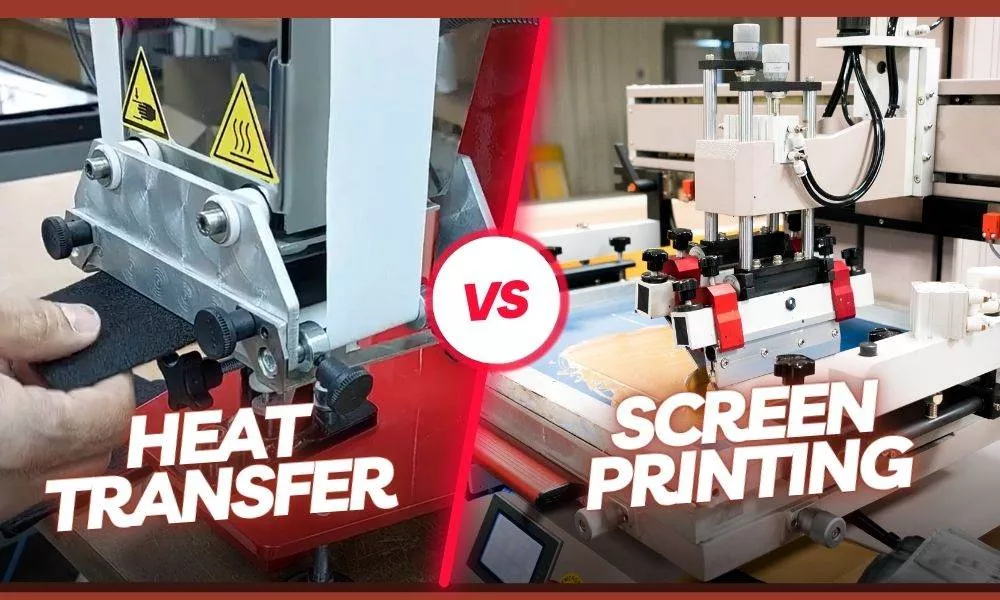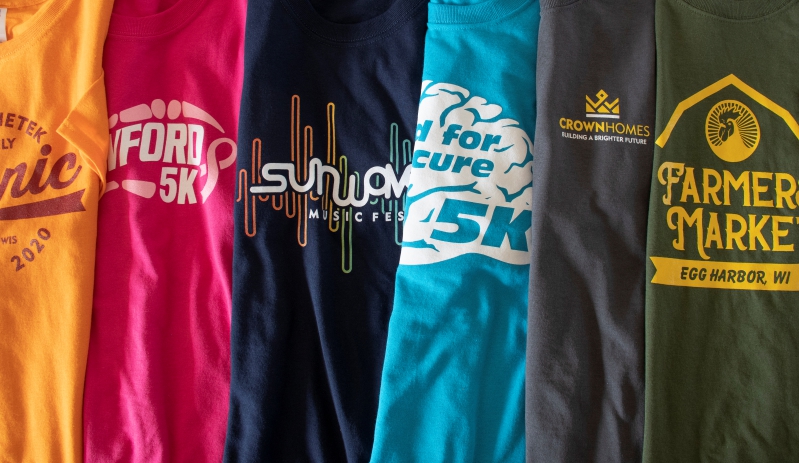10 Simple Techniques For Tx Tees
10 Simple Techniques For Tx Tees
Blog Article
The smart Trick of Tx Tees That Nobody is Discussing
Table of ContentsTx Tees Things To Know Before You BuyThe Best Guide To Tx TeesExamine This Report on Tx TeesSome Known Factual Statements About Tx Tees Not known Factual Statements About Tx Tees The Greatest Guide To Tx TeesMore About Tx Tees
Include up various other expenses, like the number of utilities it takes to run the store and the expense of ink and emulsion per design. Take the print listed below.The emulsion ought to just be a couple of cents because you 'd only need to layer one screen for this job. Typically, printers try to make up to 45% earnings on a print work.

With DTF, you can publish a handful of tee shirts, or simply one. Make use of the very same calculator as the area above to compute just how much earnings you would certainly use DTF transfers. Contrast the expenses and profits to whichever method talks ideal to your arrangement and procedure. Both screen printing and DTF have their niches worldwide.
The 7-Minute Rule for Tx Tees
The finest way to recognize? Ask around and see what printing shop like your own are doing. custom screen printing. Attempt both out and see which you like better
When you're picking what sort of printing method to use for publishing your art work designs on your garments, it's crucial that you recognize the distinctions between these two methods so you can take full advantage of results while decreasing prices. Screen printing is the most generally used method for printing styles on fabrics.
DTG printing is also understood as place or straight to garment printing due to the fact that it publishes just what is needed as opposed to making a screen as display printers do. https://www.storeboard.com/txtees. Screen printing functions by screen filler squeegee display printing ink screen mesh display, then moving the photo to garment utilizing warm and/or pressure
The DTG printer makes use of special dye-sublimation inks that are used into a pre-designed photo by an electronic printing system. The inks enter into the material, enabling for vibrant shades and phenomenal information. It's also called spot or straight to garment printing since it prints just what is required rather than making a screen as display printers do.
The Best Guide To Tx Tees
Initially, it's much faster - you can print a fullcolor picture in mins, as opposed to hours for display printing. Second, there's no set up time or costs included - you can print any type of design you such as, without having to produce a display initially. Third, there's no waste - since display printers screen print one design at a time, they have to evaluate each color separately.
The paper is extremely costly and can only be made use of once. Once it's printed on, it has to be discarded. - The first purchase price is less than the upfront financial investment of DTG printers- You can print multi-color layouts one display each time as opposed to having to publish each shade independently like DTG printing.

What Does Tx Tees Mean?
Instead of utilizing display mesh as screen printers do, dye sublimation printers make use of laser technology to move your photos onto garments or paper. A heat process moves the dye from its solid-state directly right into the gas stage which in turn merges it onto fabric substrates when they are quickly heated up to high temperature levels under high pressure.
Sublimation printing is environmentally friendly. It makes use of much less water than screenprinting, and because it doesn't include the usage of dangerous solvents, it's secure for all sorts of apparel. The color sublimation inks are additionally odorless when treated, unlike screen printers that make use of dangerous chemicals throughout the display printing procedure that leave behind an unpleasant smell.
They also save money on pricey tools like direct exposure devices since dye sublimation printers do not call for a UV direct exposure device or a flash remedy stove that is commonly made use of in display printing (t-shirt printing). What is straight to garment printing (DTG Printing)? DTG printing is an electronic screenprinting procedure that publishes straight onto material utilizing specialized inkjet printers
Some Known Incorrect Statements About Tx Tees
DTG printing uses numerous advantages over typical screenprinting, including the capability to print photo top quality pictures, higher color vibrancy, and the capacity to print layouts on darker materials. DTG printers work resource by heating the fabric ink up until it becomes a gas. The gas then permeates the material, bonding with the fibers to produce a permanent print.

Display printers merely prepare their display after that begin publishing up until they run out of item or ink.- There is a broad range of knowledgeable screen printers around the globe, which can be useful for beginners. - It's a slower process - display printers often need to wait on the ink to dry before they can print the following shade- Screen printers require manual work, so there's a higher learning contour and it takes longer to create a top quality design- Screen printing isn't as accurate as DTG printing, so you might obtain some "blood loss" of shades from one component of the picture onto another if not done properly.
What Does Tx Tees Mean?
Nonetheless, as opposed to making use of screen mesh as display printers do, dye sublimation printers make use of laser innovation to transfer your pictures onto garments or paper. A heat procedure moves the dye from its solid-state straight right into the gas phase which subsequently merges it onto fabric substratums when they are swiftly heated up to high temperatures under high pressure.
Sublimation printing is environment-friendly. It utilizes much less water than screenprinting, and since it does not involve the usage of damaging solvents, it's secure for all types of clothing. The dye sublimation inks are likewise odorless when treated, unlike display printers that use dangerous chemicals during the display printing process that leave behind an unpleasant smell.
They likewise conserve cash on pricey tools like direct exposure units given that dye sublimation printers don't need a UV direct exposure system or a flash treatment oven that is generally utilized in display printing. What is straight to garment printing (DTG Printing)? DTG printing is an electronic screenprinting procedure that publishes directly onto fabric utilizing specialized inkjet printers.
The Facts About Tx Tees Uncovered
DTG printing supplies lots of advantages over typical screenprinting, consisting of the capability to publish photographic top quality photos, better shade vibrancy, and the capability to print styles on darker textiles. DTG printers function by heating up the textile ink until it becomes a gas. The gas then permeates the fabric, bonding with the fibers to develop an irreversible print.
Report this page